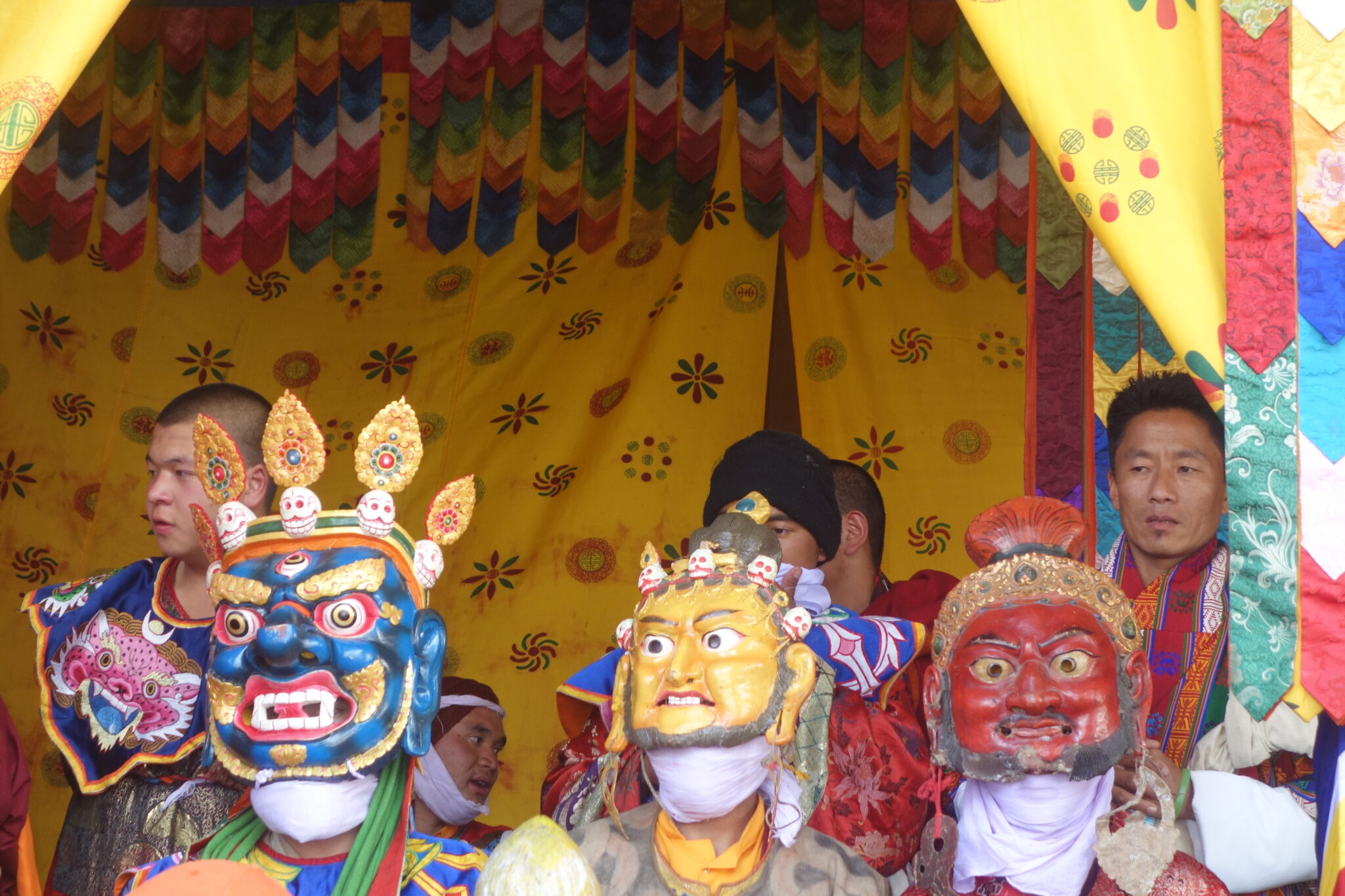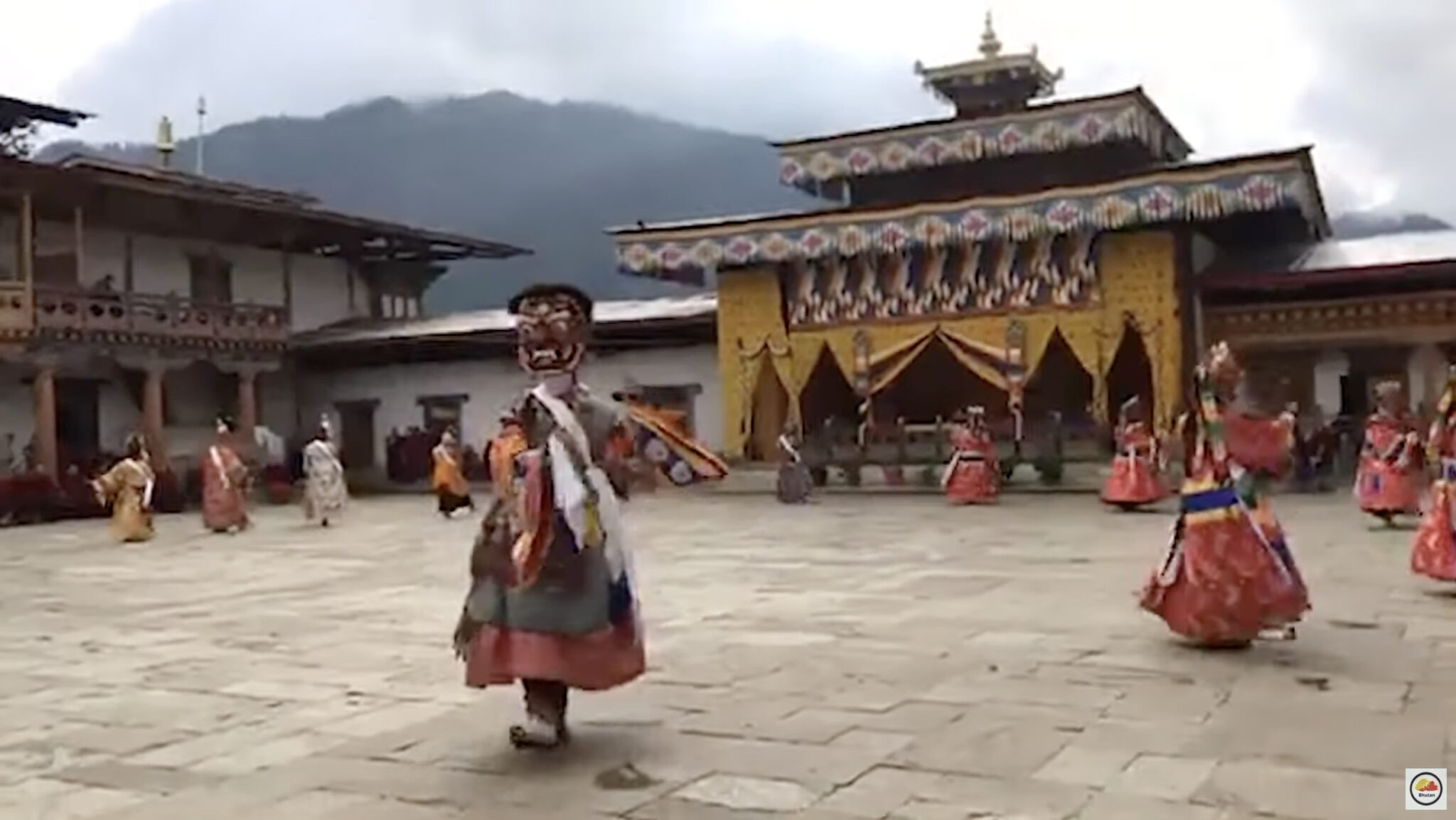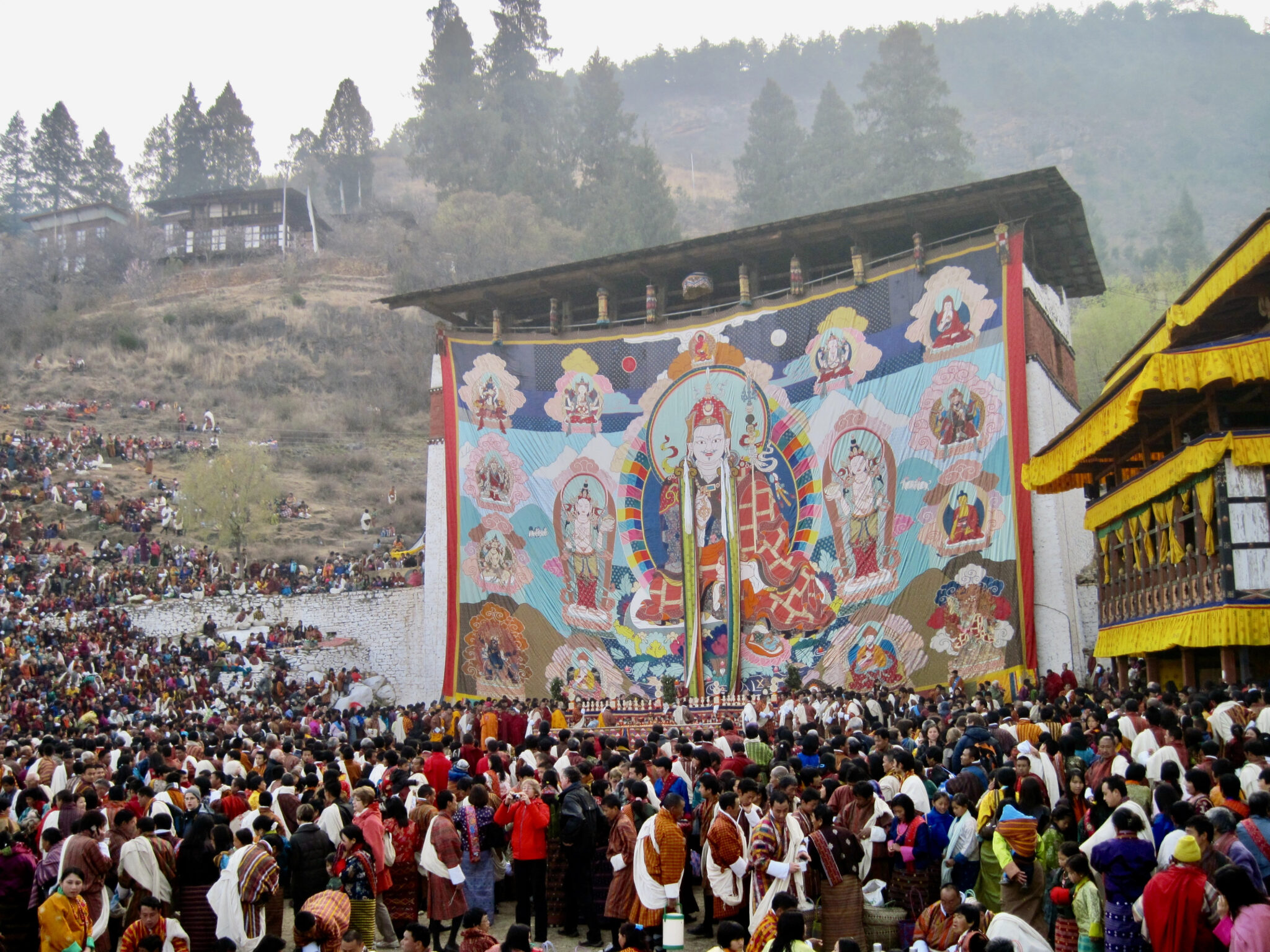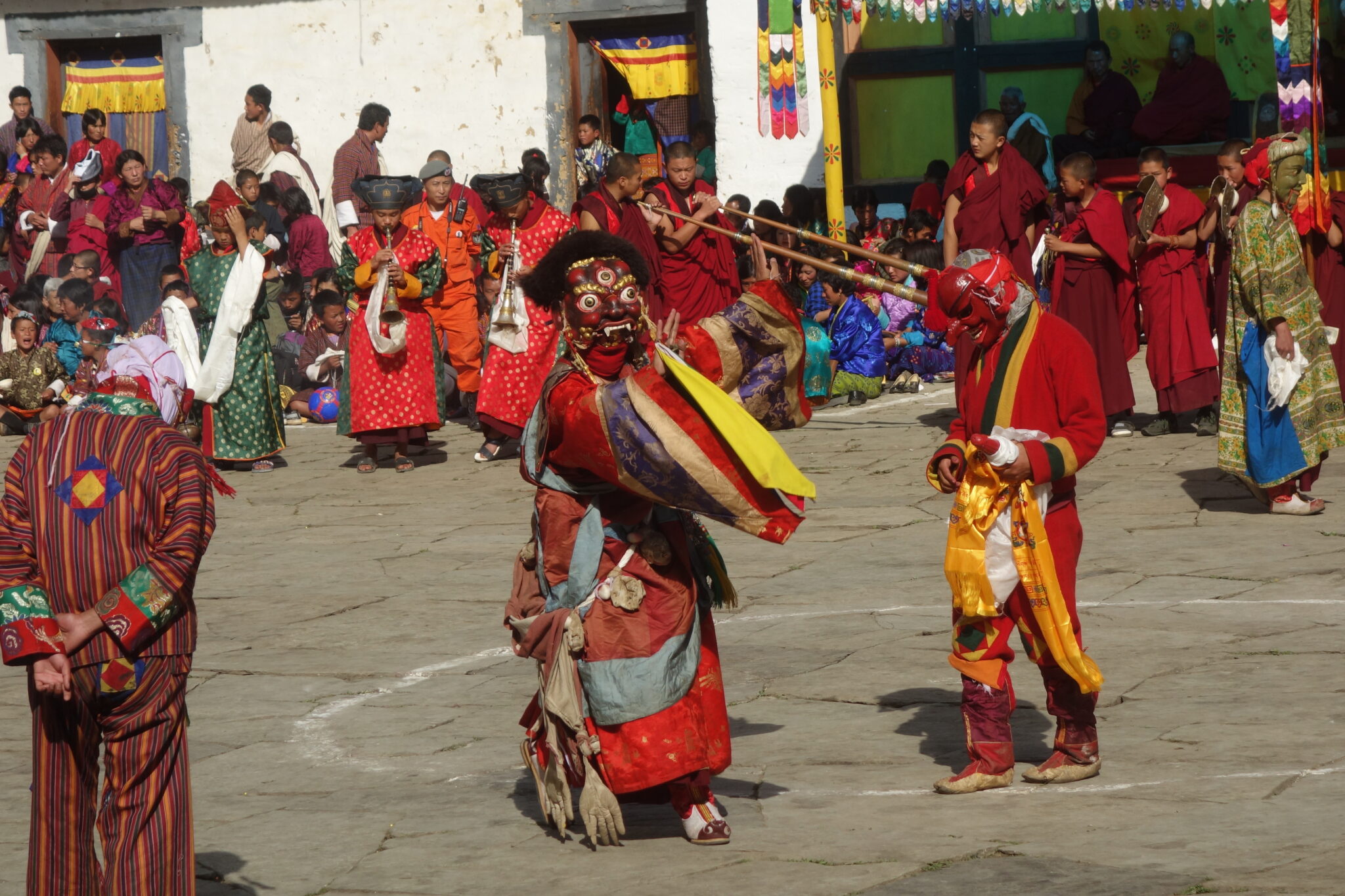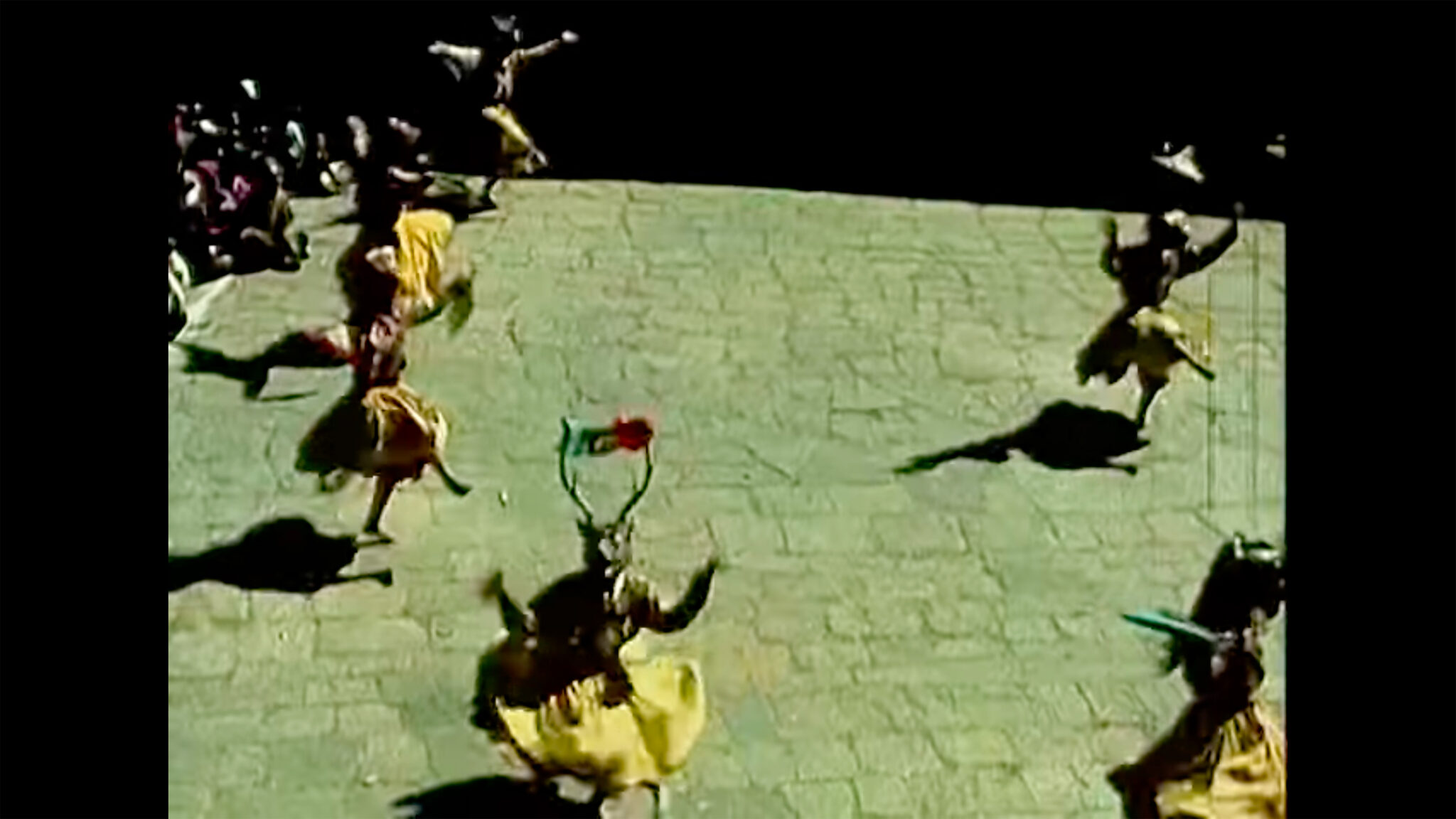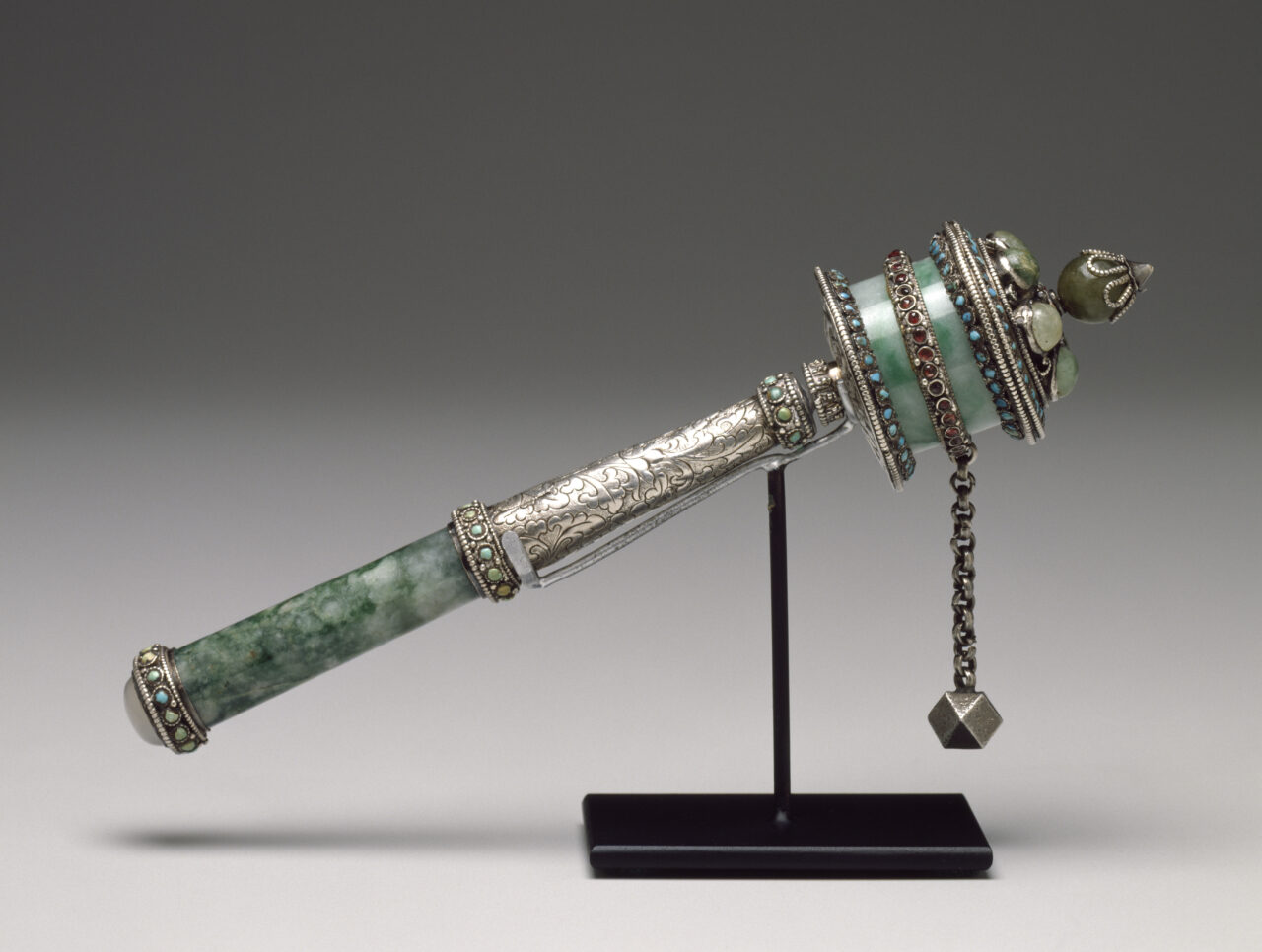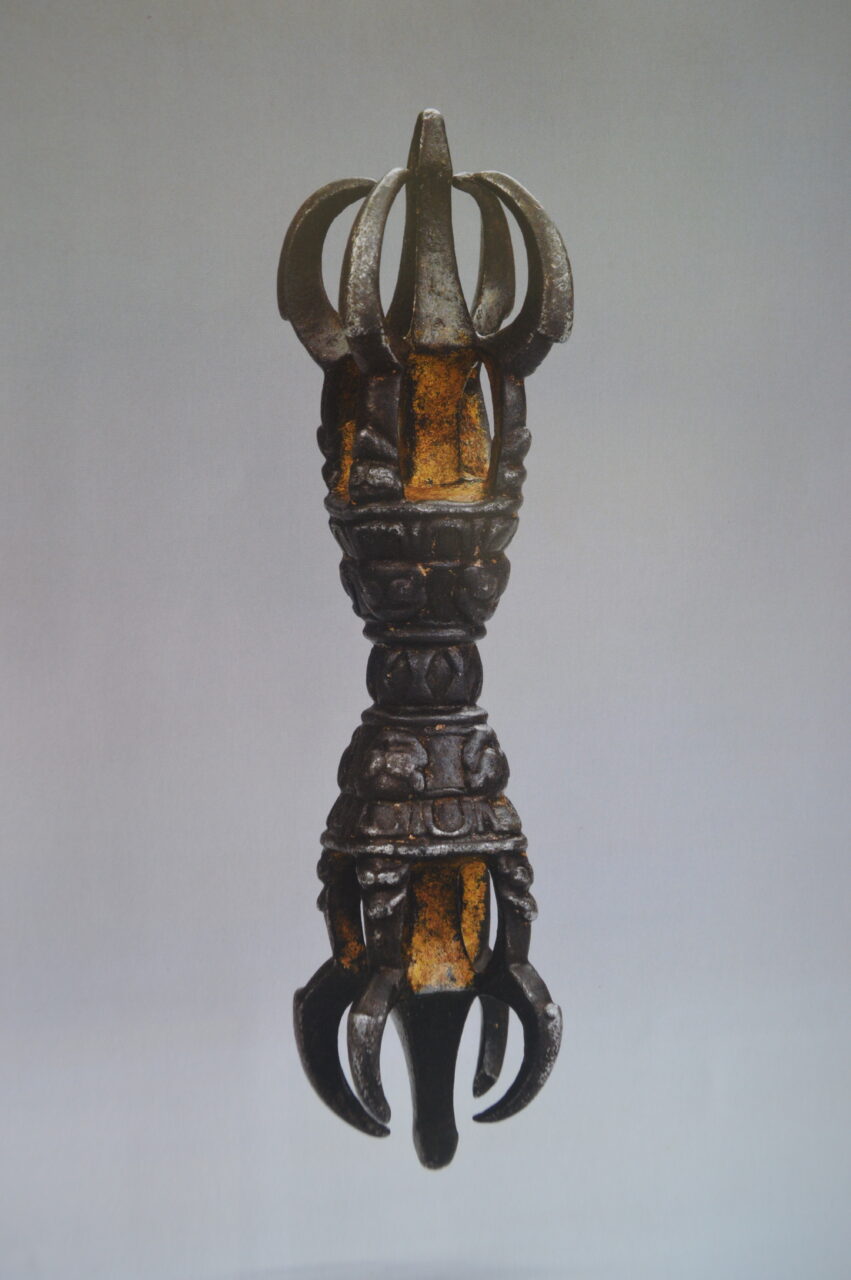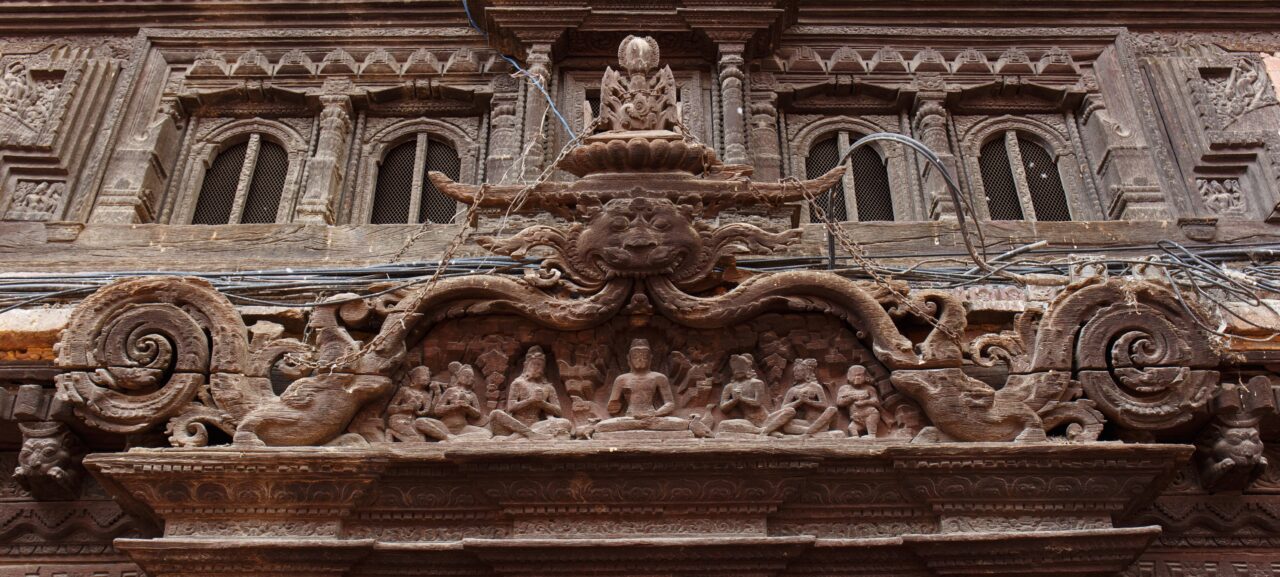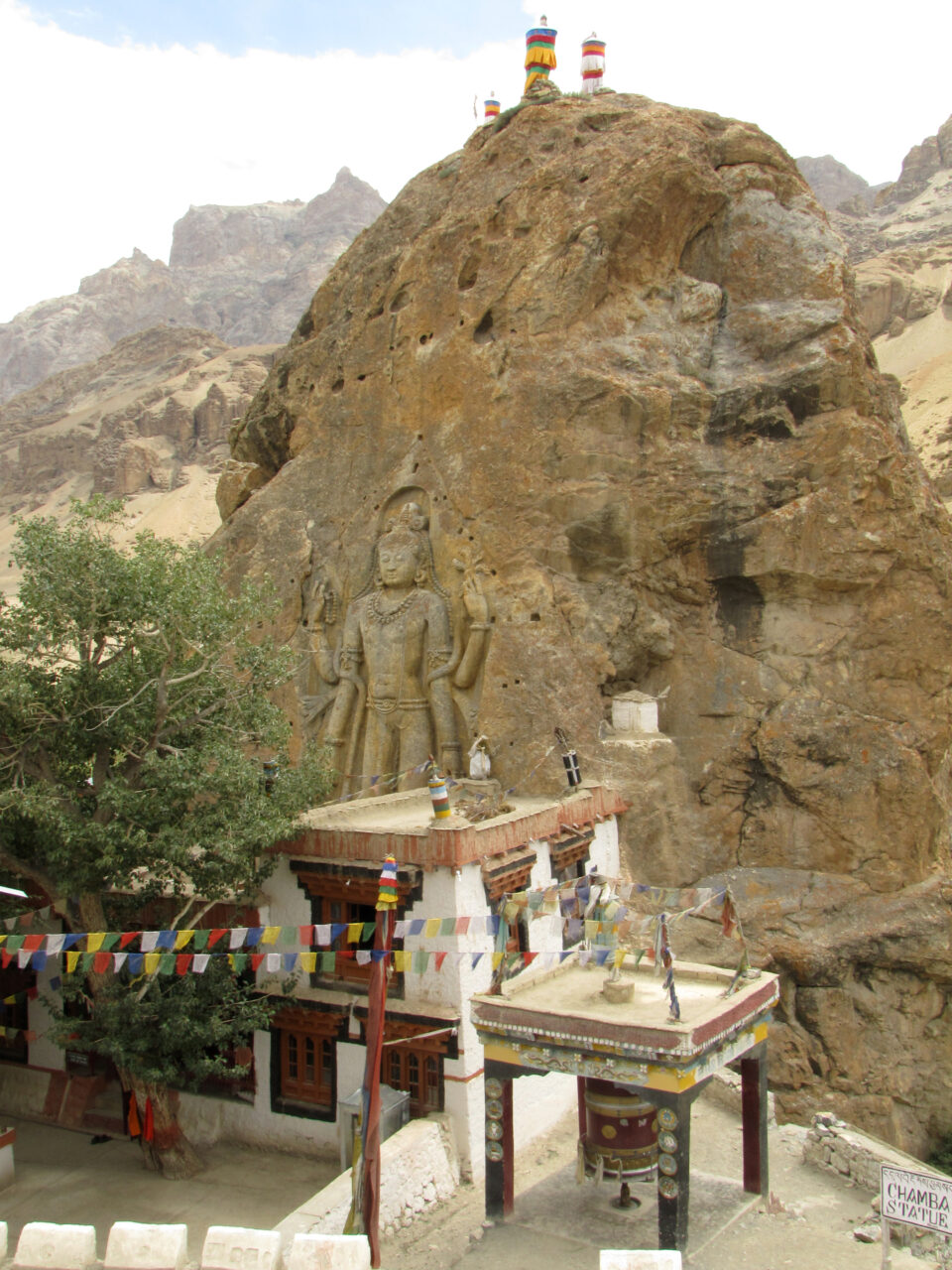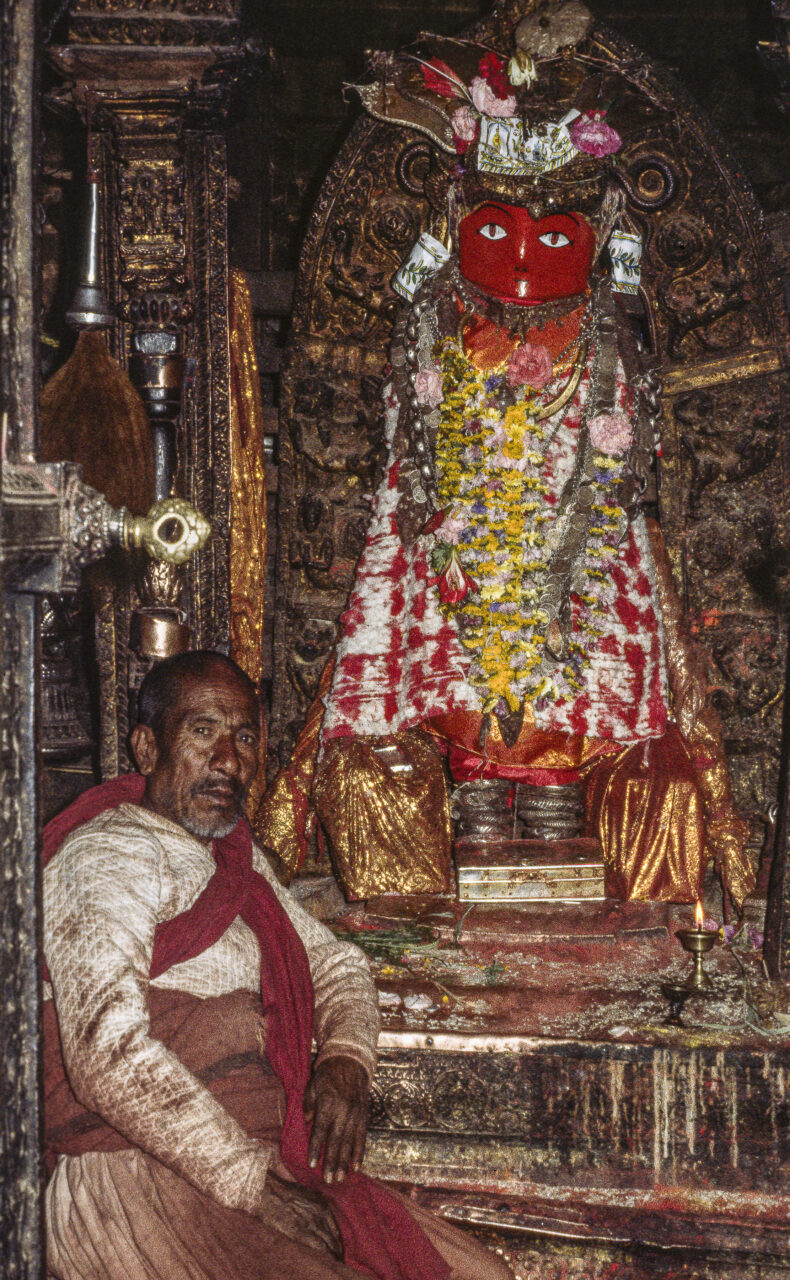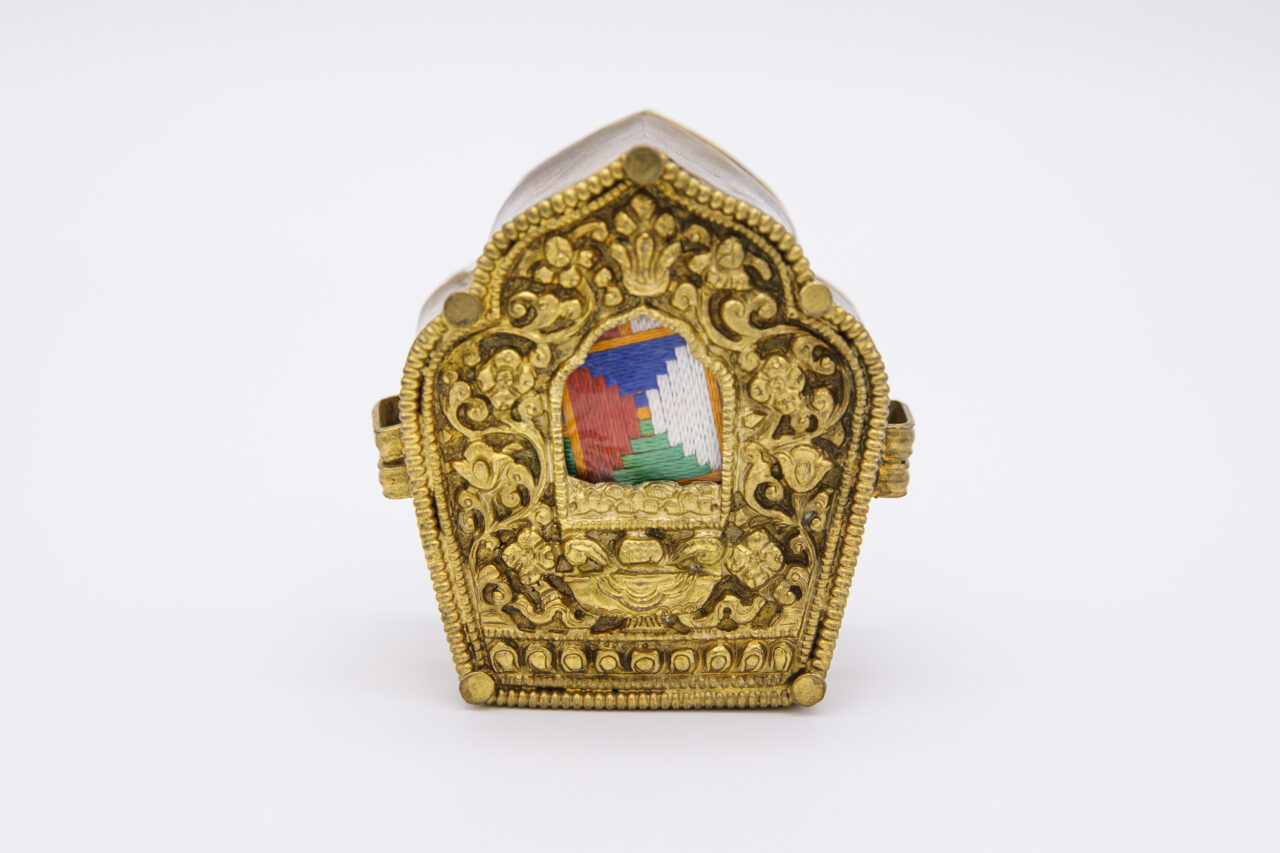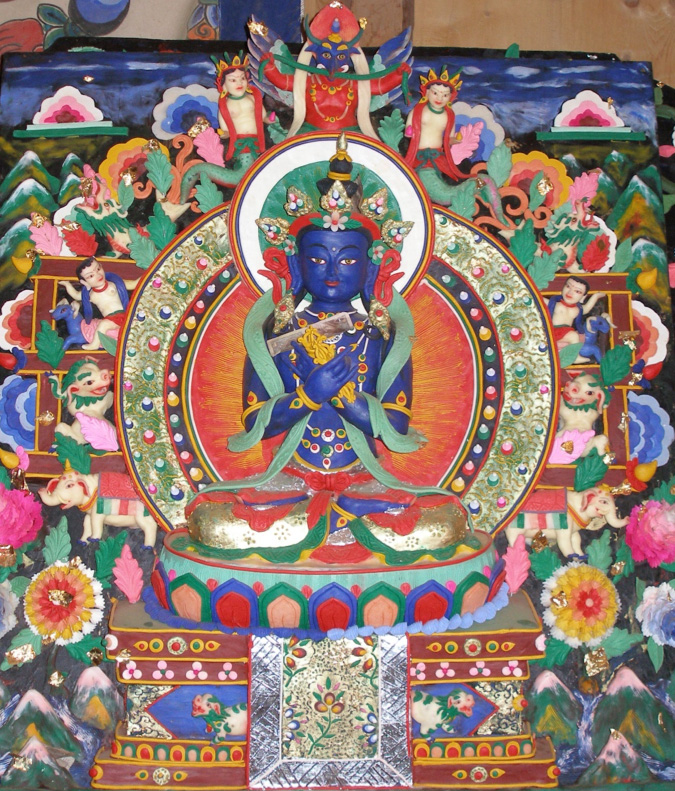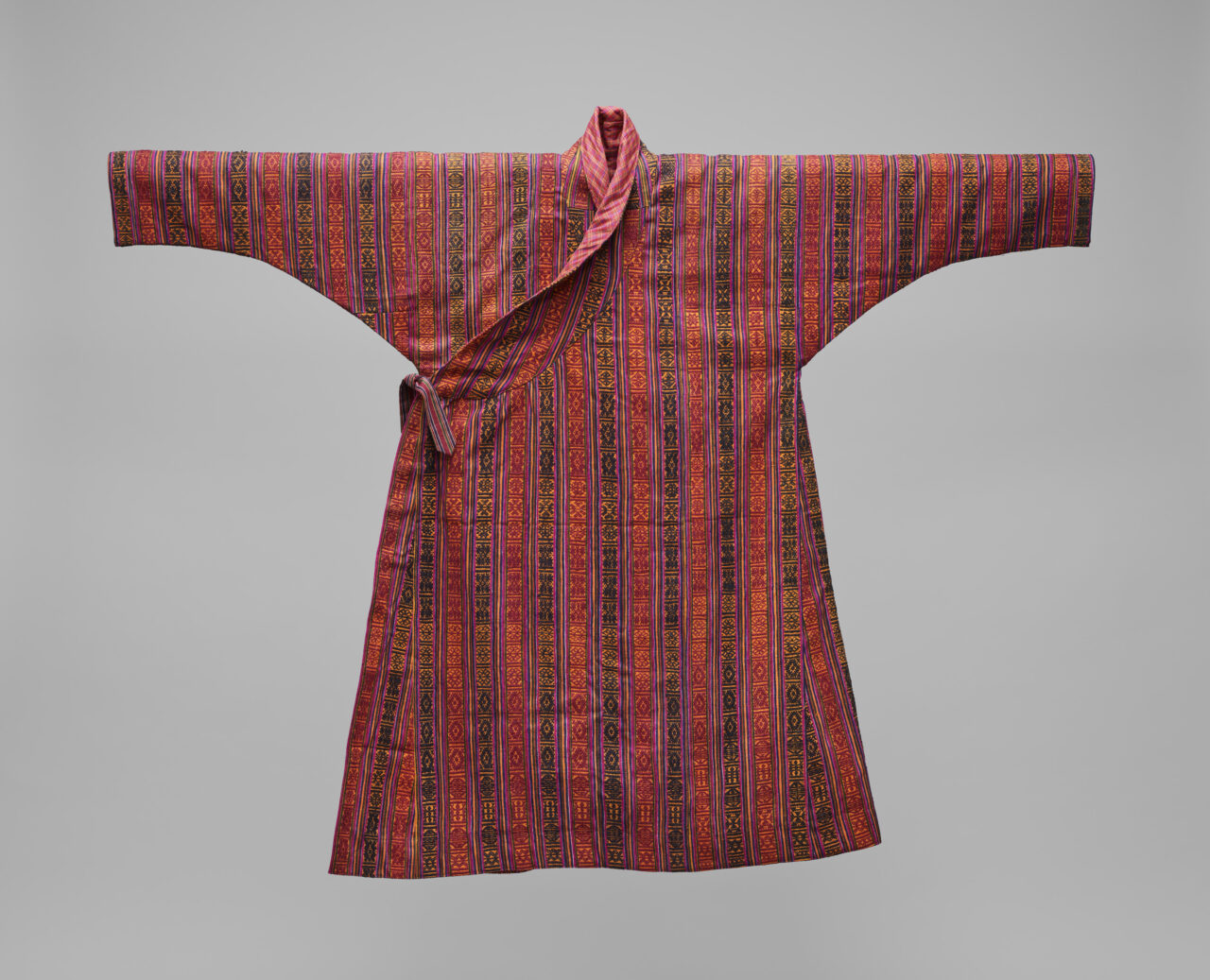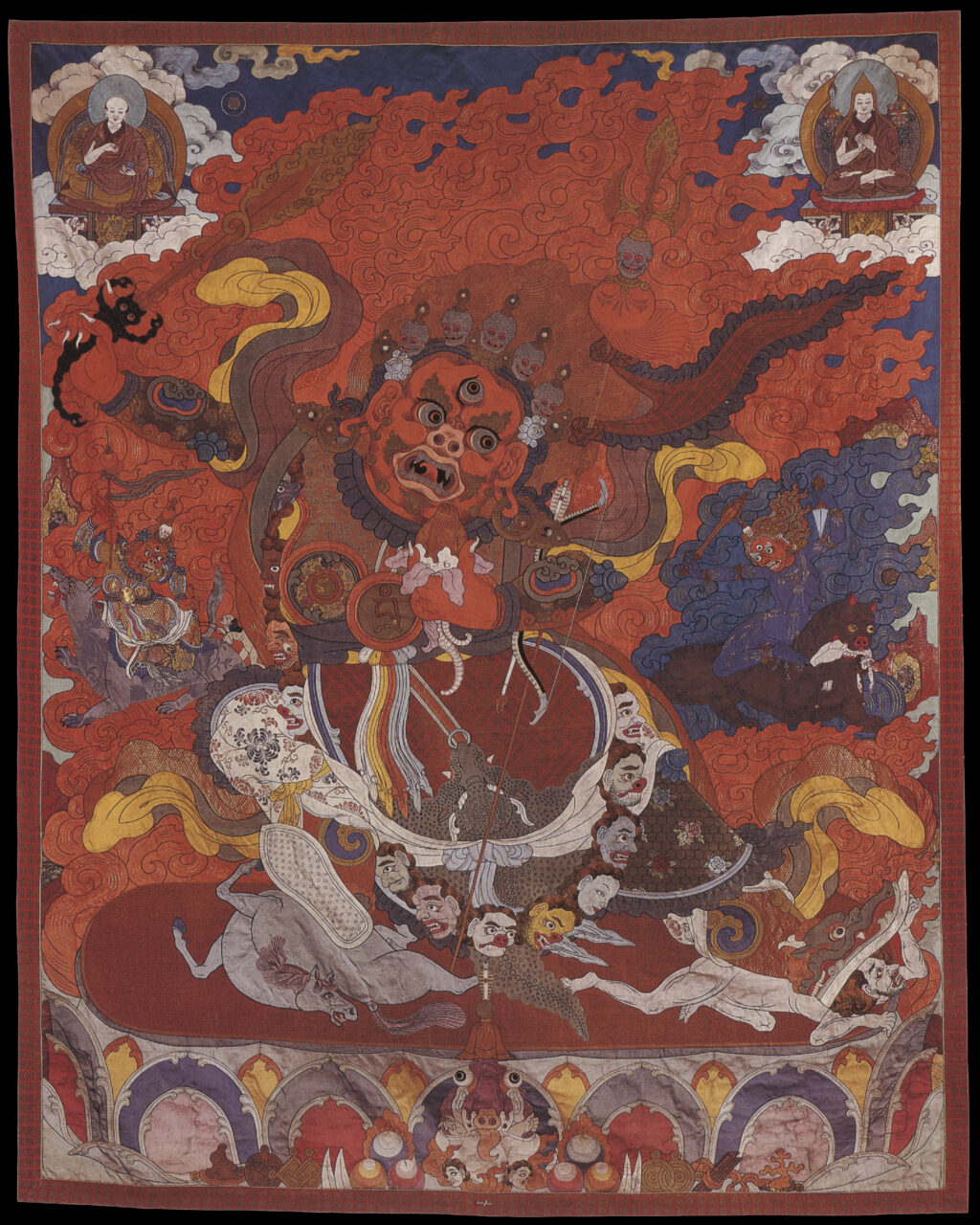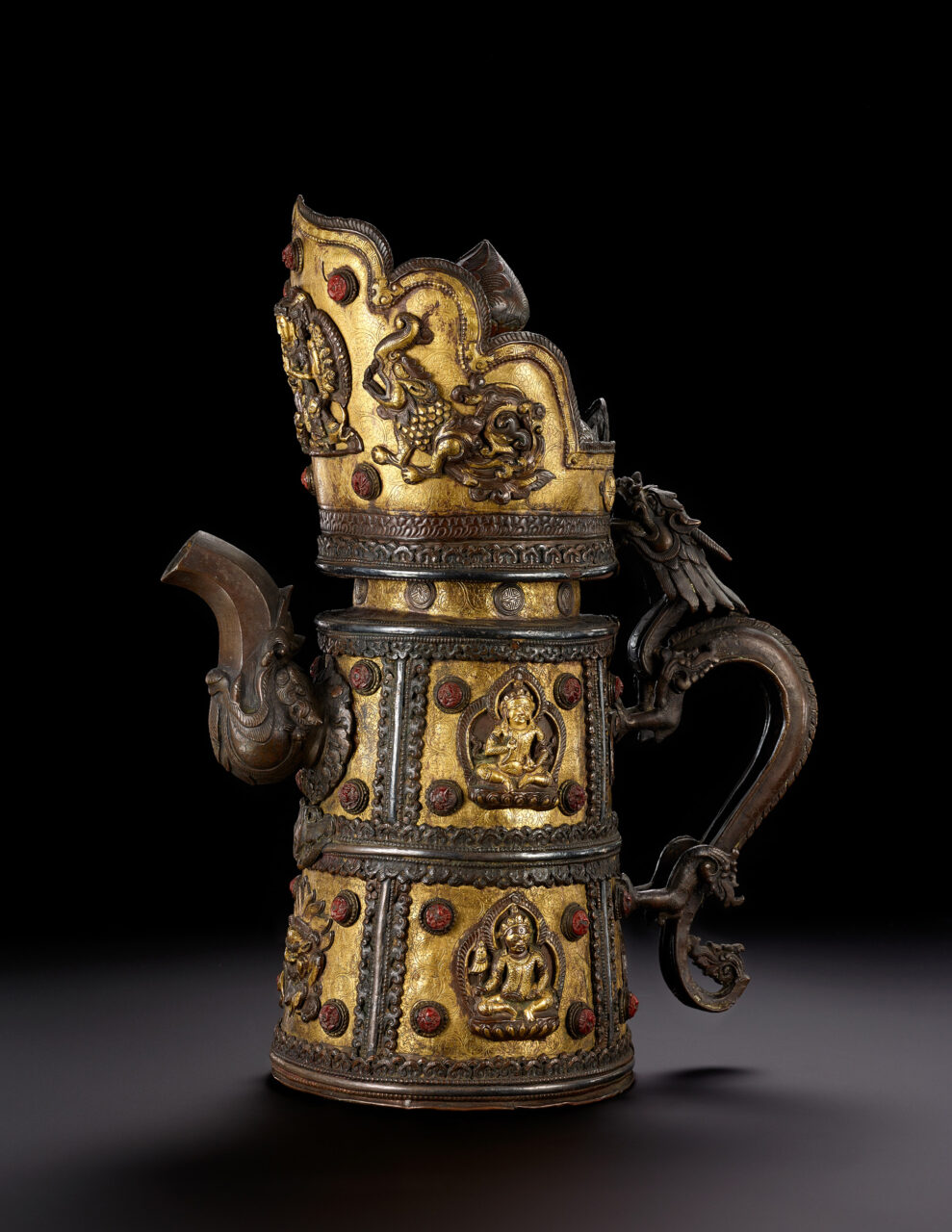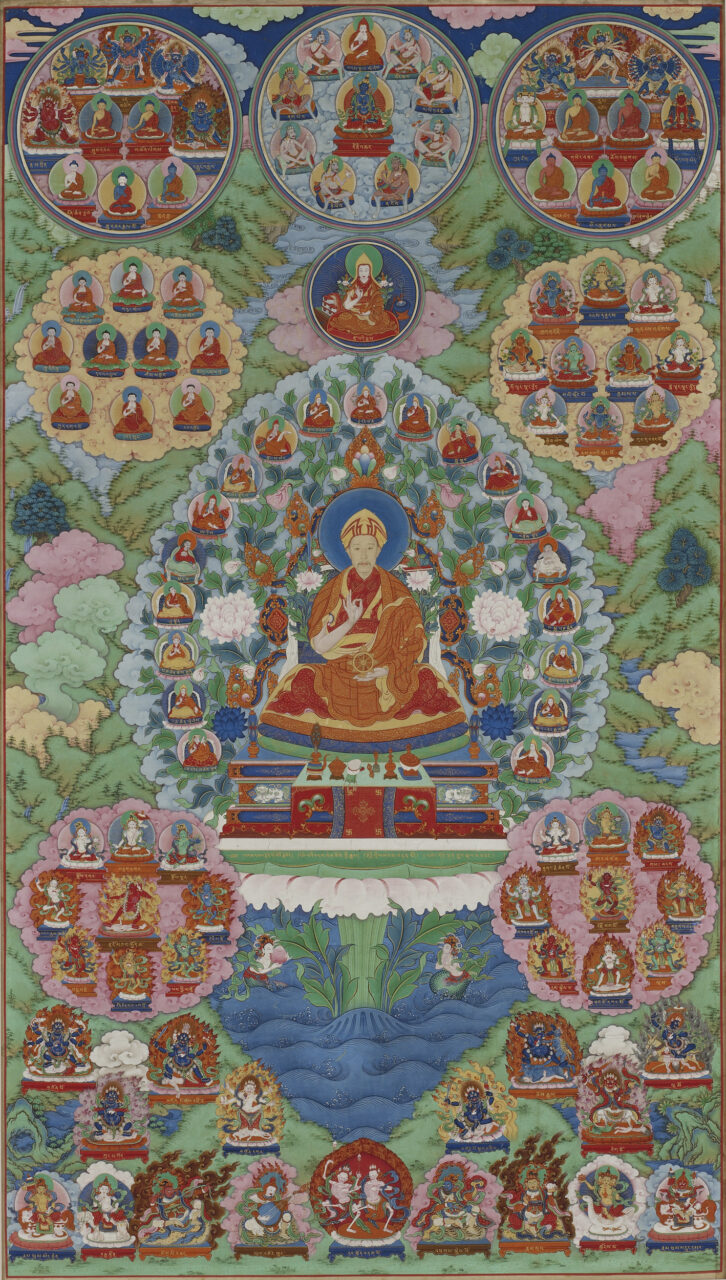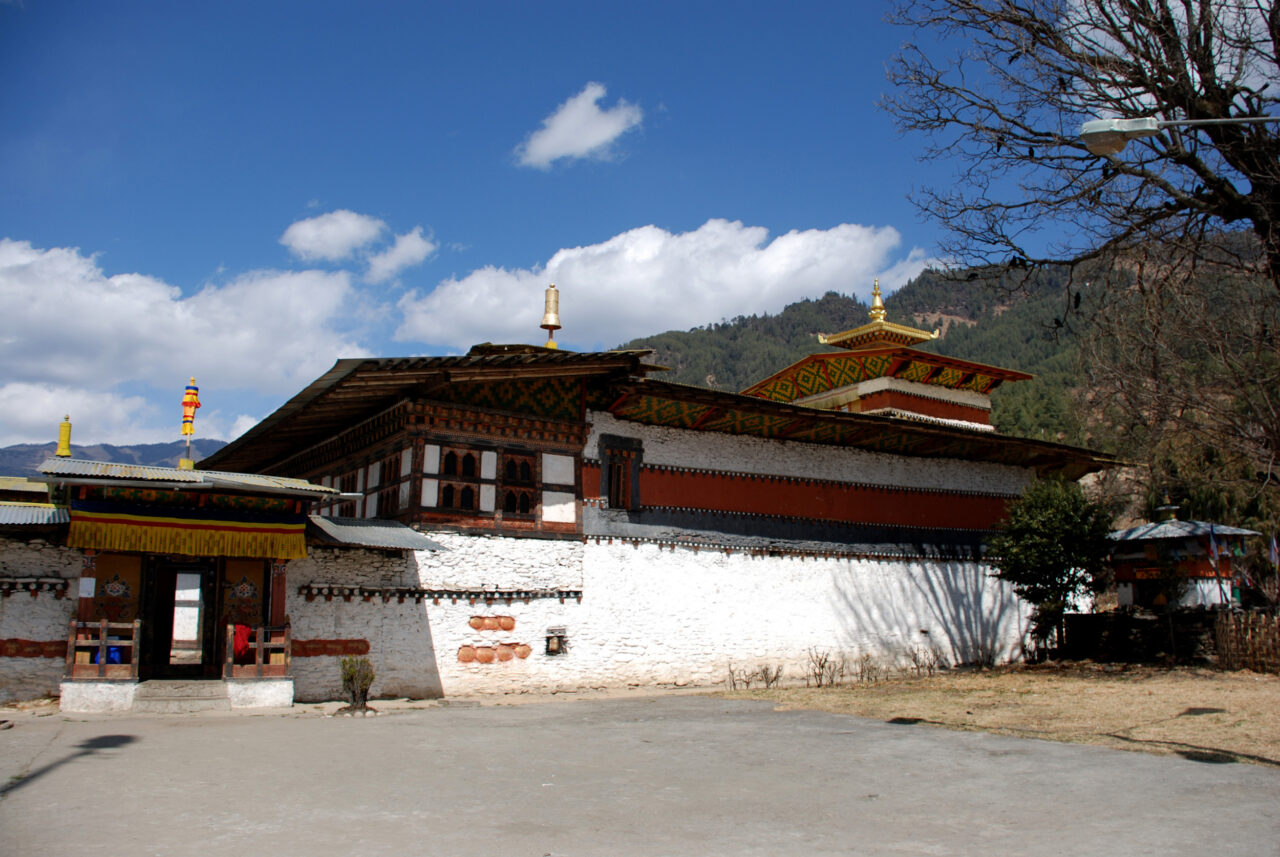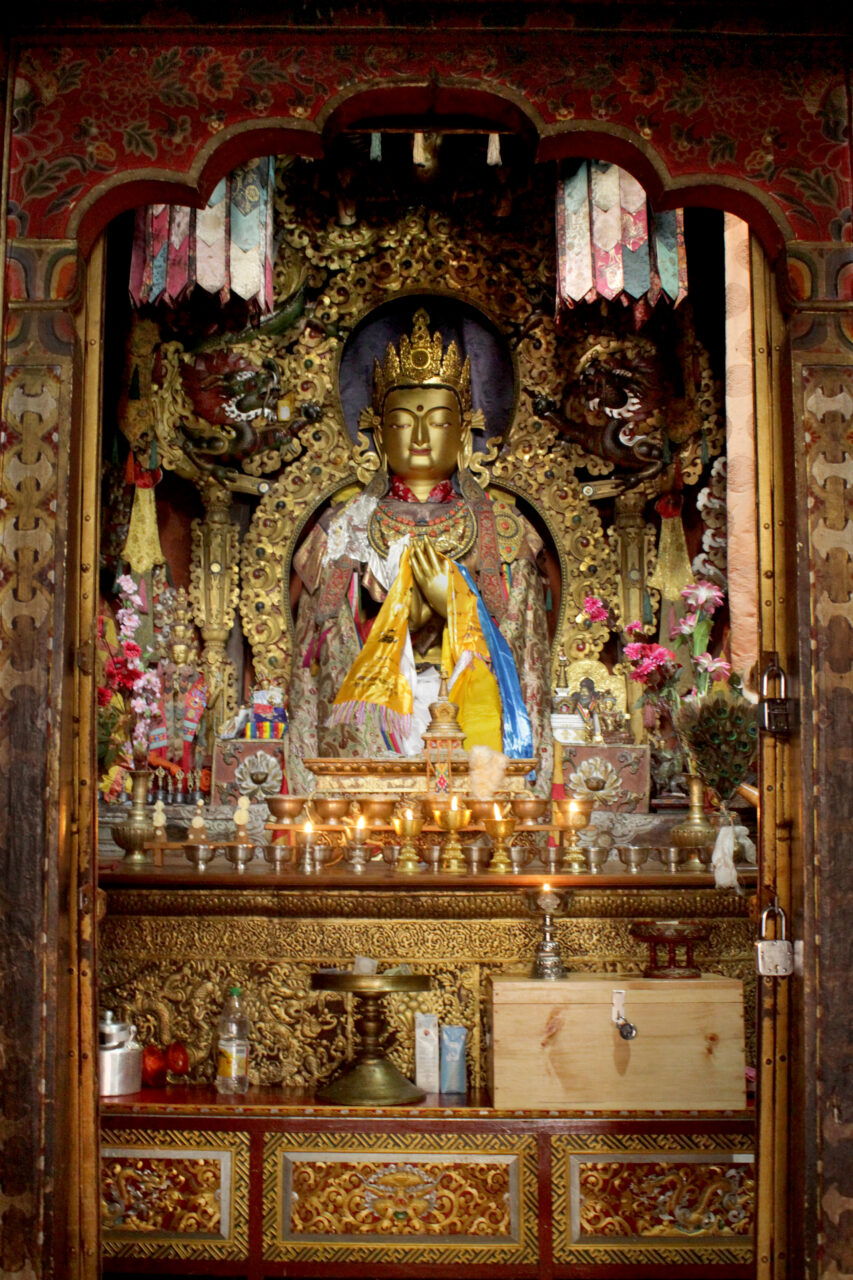Cham is a type of ritual dance performed in Tibetan Buddhism, often at holidays like the new year or the Monlam Chenmo prayer festival. The cham dancers, who are usually monks, put on masks and perform the actions of the deities they portray. Often these dancers are understood to “become” the deities. The dances often have an exorcistic function and generally are performed for the benefit of an entire community.
The Copper-Colored Mountain (Zangdok Pelri) is said to be the dwelling place or mandala-palace of the legendary Vajrayana master Padmasambhava. This mountain-palace is depicted in many thangkas and constructed as temples and portable shrines used by manipa itinerant storytellers.
The Eight Manifestations of Padmasambhava are eight names of the legendary tantric master and yogin, who became known when he defeated the hostile spirits of Tibet while converting the land and its gods to Buddhism. The names became standardized and assumed iconographic forms now known as the Eight Manifestations of the Guru. Different texts give varied lists of these manifestations.
A monastery is a place where monks live, study, and perform ritual. It includes temples and other structures. Monasteries are central to Buddhism, and are also important in Bon, Hinduism, and Daoism. In Himalayan, Tibetan, and Inner Asian areas, some monasteries are enormous, wealthy, and powerful institutions, with branches of satellite monasteries forming networks across regions, often with thousands of monks, many decorated chapels, and huge holdings of land. Other monasteries, called hermitages, can be extremely simple, little more than a cave where hermits meditate. Generally, a Tibetan Buddhist monastery will have an assembly hall, several temples (Tib. lhakhang) for worship of specific deities, a protector chapel, as well as monks’ accommodations. A related institution in Newar Buddhism are the baha and bahi.
In Vajrayana Buddhism and Bon, a purba (Skt. kila) is a ritual three-bladed dagger or stake used to subdue or pin down the spirits of the earth during rituals, or when demarcating sacred space for mandalas or temples. Purba daggers are also personified in the deity Vajrakila, the “Vajra Dagger.”
The Nyingma tradition of Tibetan Buddhism holds that gurus of the past like Padmasambhava concealed texts, objects, and even hidden lands (Tib. beyul) throughout the Himalayan landscape, meant for later generations to discover at the time the teachings are needed. Tantric practitioners and yogis who discover these treasures are called terton, or “treasure revealers.” Treasure revealers can also uncover “mind-treasures,” revealed to them by deities or lineage masters in dreams and visions. There are treasure-revealers in the Bon tradition as well.





